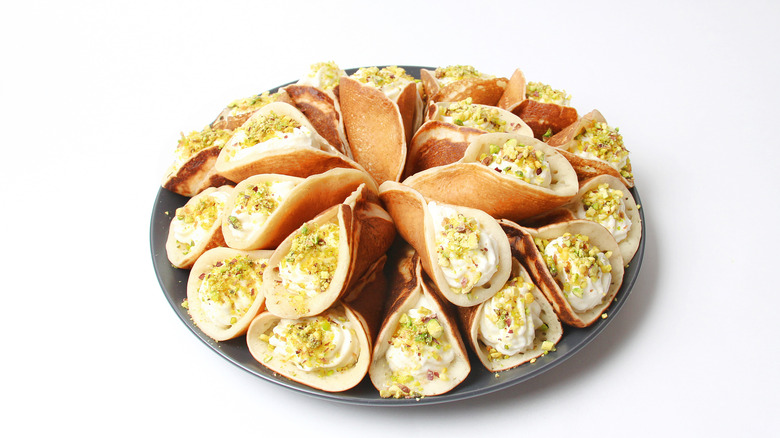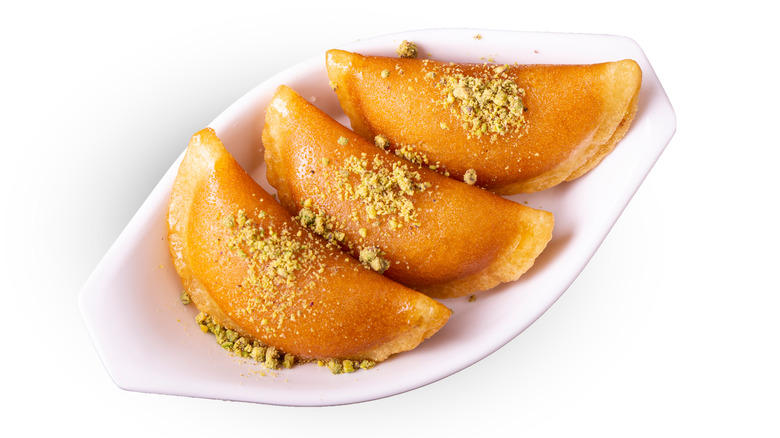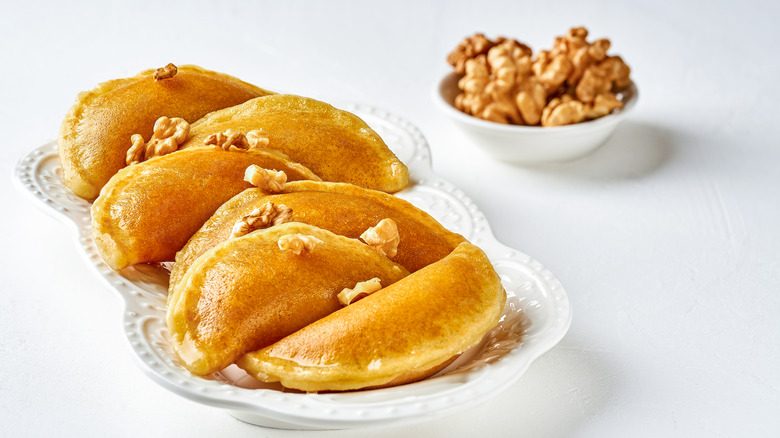The Traditional Middle Eastern Sweet Popular During Ramadan
The ninth month of the Muslim calendar is important for those who worship because it is the holy month of fasting — Ramadan. According to Britannica, Ramadan marks the period when Islam's holy book was revealed to the Prophet Muhammad. The source also notes that it begins and ends with the appearance of the crescent moon. Ramadan requires practicing Muslims to fast from sunup to sundown, abstaining from eating or drinking anything while the sun is visible — even water.
Once the sun sets, the fast may be broken. The Los Angeles Times reports that some people start by drinking water, then eat a few dates. Traditionally, they eat an odd number of dates — three or five — to follow Muhammad's example.
But even during a season spent in sacrifice and reflection, Muslims around the world have something sweet to look forward to at the end of each day. A dessert called qatayef is a popular treat for Muslims to enjoy at the end of each day-long fast, per The New York Times.
What qatayefs are made of
Qatayef are little pancakes made with flour, semolina, yeast, and baking powder. They are then cooked on one side as a British crumpet might be. Their filling depends on however you want to enjoy the dish. You can fill qatayef with anything. If you want, you can use a combination of crushed nuts and sugar, and cinnamon, per YouTube. You can also fill them with cream, cheese, and nuts.
After filling it, the qatayef is folded into a crescent before being fried, baked, and soaked in syrup. The pancakes can be left partially unsealed and fried before stuffed with cream or enjoyed neatly with no filling, and a drizzle of sugar syrup, per The New York Times.
Roya News says that while the treat is believed to have been created during the Fatimid Dynasty, which ruled North Africa before the end of the first millennium, it dates back to the Abbasi Caliphate, which ruled between 566 to 653 CE. It was said to have been created for the Caliph, who wanted a sweet treat that could keep him going for long periods of time.
Qatayef is a seasonal treat best enjoyed during Ramadan
Qatayef can't be eaten any time of year, but "qatayef is associated with the long days of fasting during Ramadan. Every day after iftar, the fast-breaking meal at sunset, people enjoy one or two pieces of Qatayef as a tradition," Amman sweet shop worker Mohammed Syam tells The Arab Weekly. And the moreish pastry isn't just served when Muslims break the day's fast after sunset because, as Mohammad Syam explains, "During Ramadan, Qatayef is served in every house as the main sweets after a heavy meal."
Although the pastry is easy to make and much beloved, the idea of eating it outside of Ramadan can be odd. Fashion designer Eman Al-Ahmed, who has the treat every night during Ramadan tells The New York Times, "They just taste different in Ramadan. Perhaps it's the nostalgia and the generations-long tradition. But qatayef are this ritual that brings everyone in the community together."


